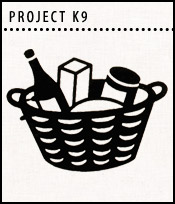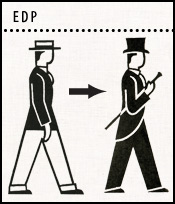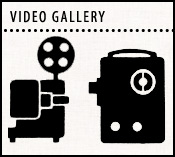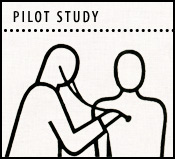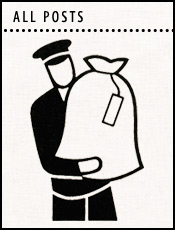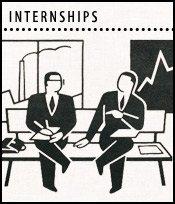March 7th, 2010
A Special Report From the Malaysia Bureau
When Scott and Woody asked if I would write an entry on Kuala Lumpur (KL to its residents) for this blog, I said yes enthusiastically. After a weekend of wheeling with the two, I had a renewed appreciation for the city I call home, a sense I wanted to communicate to AsiaWheeling’s readers. And like every local, I knew inspiration was to be found at our hawker stalls.
Malaysians are gluttons, and we can well afford to be. Fantastically delicious and affordable, local street and “coffeeshop†fare reflect the tasty possibilities of plural societies. KL, one of the most diverse cities in Asia, is composed of about 40% Malays (a mix of Javanese, Siamese, Indian, Arab, and Polynesian descent), 40% ethnic Chinese, 10% ethnic Indians, and 10% other and mixed heritage. Local hawker stalls are also the site of a rare egalitarianism: corporate tycoons, high court judges, fast-food servers, and cab drivers all frequent the same stall by the side of the road with questionable standards of safety and hygiene but with the best bak kut teh or nasi lemak in the neighbourhood. Various dietary restrictions are well accommodated. KL does food well, although it seems not much else.
Indeed, Malaysia’s capital has been making the news for all the wrong reasons. Much of this news, especially in the foreign press, covers events related to the federal government’s moral policing and its opportunistic adoption of an Islamic posture in more recent times. Every new constitutional amendment, political speech, and errant Syariah court decision signals the erosion of a democratic, secular political culture that reflects the significant percentage of non-Muslim citizens (at least 40% of the population) and that was the heritage of this former British colony.
The federal government, having never taken well to criticism, questions, or alternative opinions, suffers from a bankruptcy of ideas. It runs on patronage, empty rhetoric, draconian laws, and an unassailable belief that national resources can ride the country through financial crises, vast mismanagement of resources, and widespread corruption in the civil service. The KL City Hall fares no better, in its evident confusion of systematic urban planning for rezoning land to allow even more commercial development, leaving residents to handle KL’s famous traffic jams, urban slums, flash floods, haze, and a host of associated problems.
But the city itself is young (in both population and institutional age) and has promise. Founded as a tin mine only a century and half ago and with the resources of the entire nation channelled towards its development, this once sleepy backwater at the confluence of two rivers (from which the city derives its name, literally “muddy estuaryâ€) has become a veritable city of dreams where, with apologies to Italo Calvino, everything imaginable can be realised (it helps to know the right people).
It follows that KL is also known to its residents as “Boleh Land†(trans., Can-do Land). Although this epithet is used to poke fun at official rhetoric and the latest local attempt at breaking a meaningless world record (biggest flag, longest sandwich, greatest waste of money, etc.), the description fits. KL exudes pumped-up, “Malaysia Boleh!†(trans., Malaysia Can!) exuberance and an anything-goes mentality. The latter keeps us more liberal and edgy than neighbouring nanny state Singapore. As long as you’re not a beer-drinking Muslim woman or a refugee or queer or a member of the political opposition or a non-Muslim with a penchant for using Allah’s name or intending to participate in a public protest (unless you are protesting the opposition or anyone who offends Islam) or anyone who disturbs the status quo and its Victorian-Islamic-Asian Values-bumiputeraist moral sensibilities, the authorities are pretty willing to tolerate difference. (Thankfully, citizens are upping their expectations. There’s been talk of universal human rights….)

In the meantime, the authoritarianism of the state, the politics of patronage and corruption that riddle the system, and the heavy moral policing of more vulnerable subjects—all at their most concentrated in KL—are infrequently confronted and mostly just add a bit of edge to middle-class urban lives otherwise spent waiting out traffic or tucking into some of the best street food to be found in any city in the world.
And glancing at some picturesque architecture. Quite a spectacle are KL’s steel-and-glass skyscrapers, the most famous of which are the twin towers named for national oil company PETRONAS. Lit up after dusk, the KL Tower dazzles with its clean, elegant beauty. The Dayabumi building is a beautiful example of modern Islamic architecture, and its polished white exterior exudes a certain calmness in the midst of all the colour and bustle of this little city that could. The mosques and temples are just magnificent. But it is the colonial-era buildings that truly delight me. Charming is the sight of unassuming, simply adorned shop-houses that contain Indian garments businesses and Chinese sundry shops along the bustling TAR, a main road downtown named for Malaysia’s first prime minister, Tunku Abdul Rahman. And the kampungs not 15 minutes from the city centre, and the colourful street markets that defy common wisdom that roads are for cars alone.
Then there are the old symbols of the city, like the Mughal- and British neoclassical-inspired Sultan Abdul Samad building that faces Merdeka Square, the site where many erroneously suppose Tunku declared Malaya’s independence from the British Empire in 1957 (Malaysia itself wasn’t formed till 1963). The actual location of that historic moment is the Merdeka Stadium, a ten-minute wheel away. The stadium is currently under renovation to return it to the splendour befitting a national heritage. However, but by the luck of a financial crisis that prevented nefarious development plans from turning Merdeka Stadium into Merdeka Plaza, a square containing—what else?—office buildings, a shopping mall, and a condo, the stadium built for the very purpose of announcing the birth of this independent nation would have been no more but a chilling reminder of a government’s willingness to destroy the material landmarks of a history that binds nation and city together in a bid to attract much-coveted foreign direct investment.
Unfortunately, many other heritage buildings have not been so lucky. On the brighter side of things, I have seven more shopping malls from which to get an ice-blended coffee drink or monogrammed satchel. Vive le capitalisme!
BBut let’s return to KL’s gastronomic offerings. Of which there are many. From fragrant nasi kunyit topped with curry or rendang bursting with flavour and spice and ooomph to hot, soupy pan mee, my most favourite noodle dish in the world, to the sinfully ghee-rich roti canai, a local version of the paratha which locals like to eat for breakfast or a mid-afternoon snack, there are Malaysian dishes to cater to every time, taste, mood, and budget.
Lunch fares are particularly brilliant: all variations on the theme of a plate/leaf of rice and a variety of curries and dishes to add as one fancies. Buddhist vegetarian versions of Chinese zhap fan (otherwise, and aptly, called “economy riceâ€) and the Indian banana leaf rice are my favourites, and both are vegan-friendly. The meat and spice lover might try mamak nasi kandar. Nutritious and filling, under USD1.50 and zero waiting time, and finger-licking good: you will never want to return to hoagies for lunch after. An essential KLite experience is hunting down the vendor or restaurant that makes the best this and my foodie uncle’s favourite that, and the reader is always welcome to join me for such a culinary adventure.
The city also abounds with restaurants that offer foreign and fusion delicacies to homesick expatriates and local gluttons. Japanese, Lebanese, Italian, Korean, Thai, and various versions of Chinese and “Western†fare are especially popular. Someone should open up a good Mexican restaurant in town and find a way to make cheaper margaritas. (Alcohol in this country is expensive, thanks to a steep excise duty imposed to address alcohol abuse and drunk driving issues.)
Ah, KL. So much good food, so many problems that keep cropping up. As perhaps is to be expected from any multiphrenic Asian city still in the process of determining its identity and values. Would be nice if the government could get their priorities straight though. A few more libraries, better public transportation, a sin tax on households with more than one car, an actual bicycle path, a focus on attaining first-world city status by working to improve the city’s liveability, sustainability, and social justice quotients. But perhaps first that local council elections. KL could use a new mayor.
Then this city can lead the way as the country starts to realise its potential and fulfil its promise to be a just, inclusive, and prosperous home to all its residents. And “Boleh Land†can become a term of celebration, not cynicism.












